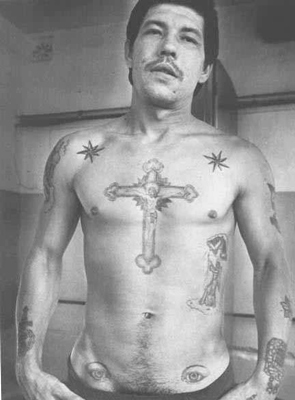How to Read Prison Tattoos
Tombstones, spider webs, the number 88 and other coded messages.
![]()

![]()
Gallery: Prison »
The Tyee.ca
Tattoos in Canada’s prisons. They’re an art form, a gang language, an underground industry and, soon, the focus of a rehab and health program sponsored by the federal government.
But how to decode what tattoos are really saying? The gallery of images here offers a start.
Correctional Services Canada plans to open six inmate-run tattoo parlors in federal penitentiaries this year (see Tyee story). Throughout the 1990s, CSC ran a tattoo removal program to allow for easier reintegration into society. The new tattoo parlors – or as CSC refers to them, “tattoo pilot programs” - are being used to minimize the spread of infectious diseases.
Tattoos are often used by prisoners to show gang and ideological affiliation, and to act as a code for what they’re doing time for. According to the CSC’s director of communication Michèle Pilon-Santilli, no gang or racist tattoos will be allowed in the parlor. But decoding gang tattoos is not as easy as spotting a swastika on someone’s arm.
The tattoos can be as subtle as the numbers on a tombstone tattoo, which indicate how many years a prisoner has served. Or spider webs on the elbows or shoulders, which bespeak the imprisoned life. To outsiders, a simple ‘88’ tattooed on someone’s arm may seem innocent enough. But those in the know understand that H is the eighth letter of the alphabet, and that HH is an acronym for Heil Hitler. Prisoners use all kinds of symbols, words, and numbers to show their affiliations to other convicts.
The Tyee obtained a copy of Identifying Prison, Gang, & Extremist Tattoos, a presentation given to the Union of Canadian Correctional Officers. It identifies several tattoos used in Russian and U.S. prisons that illustrate how esoteric this form of gang affiliation can be.
Scott Deveau is a staff writer for The Tyee.



What have we missed? What do you think? We want to know. Comment below. Keep in mind:
Do:
Do not: